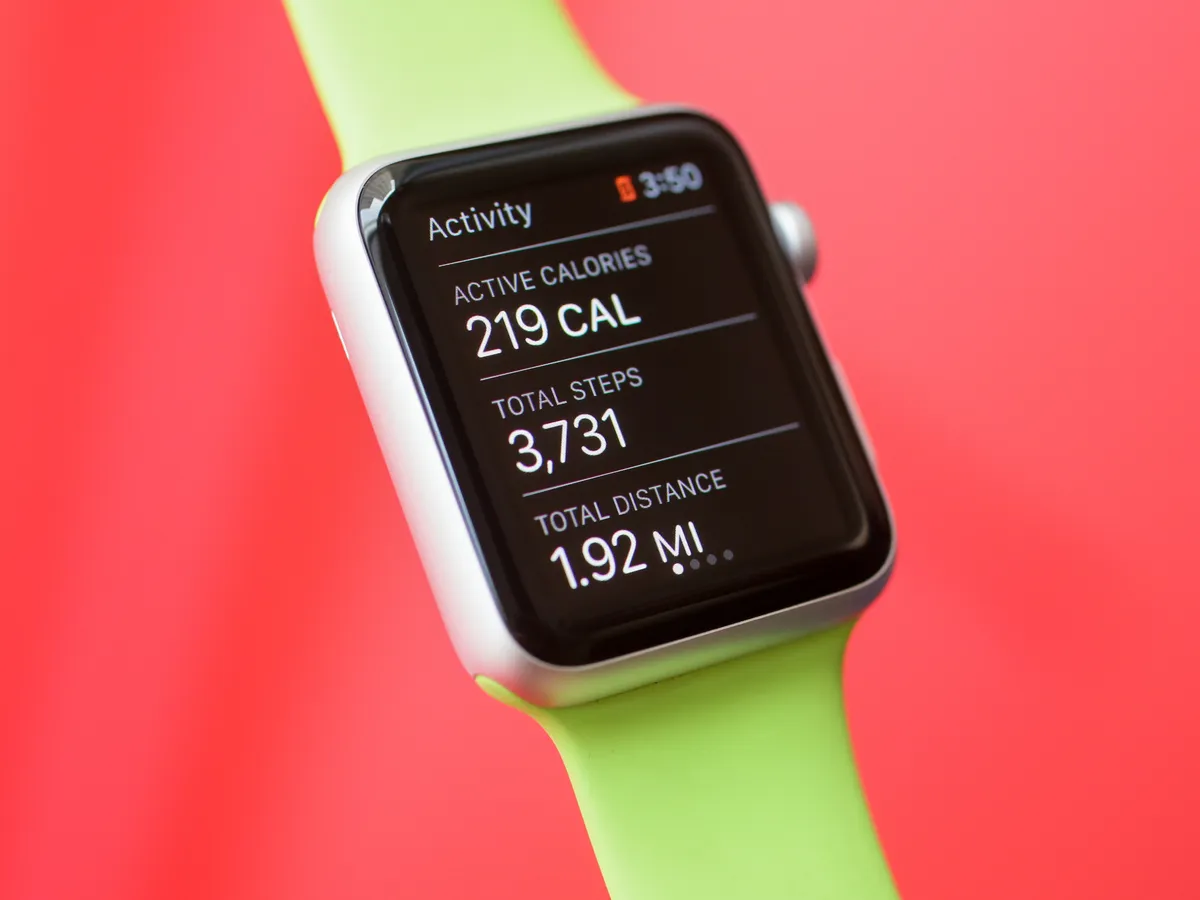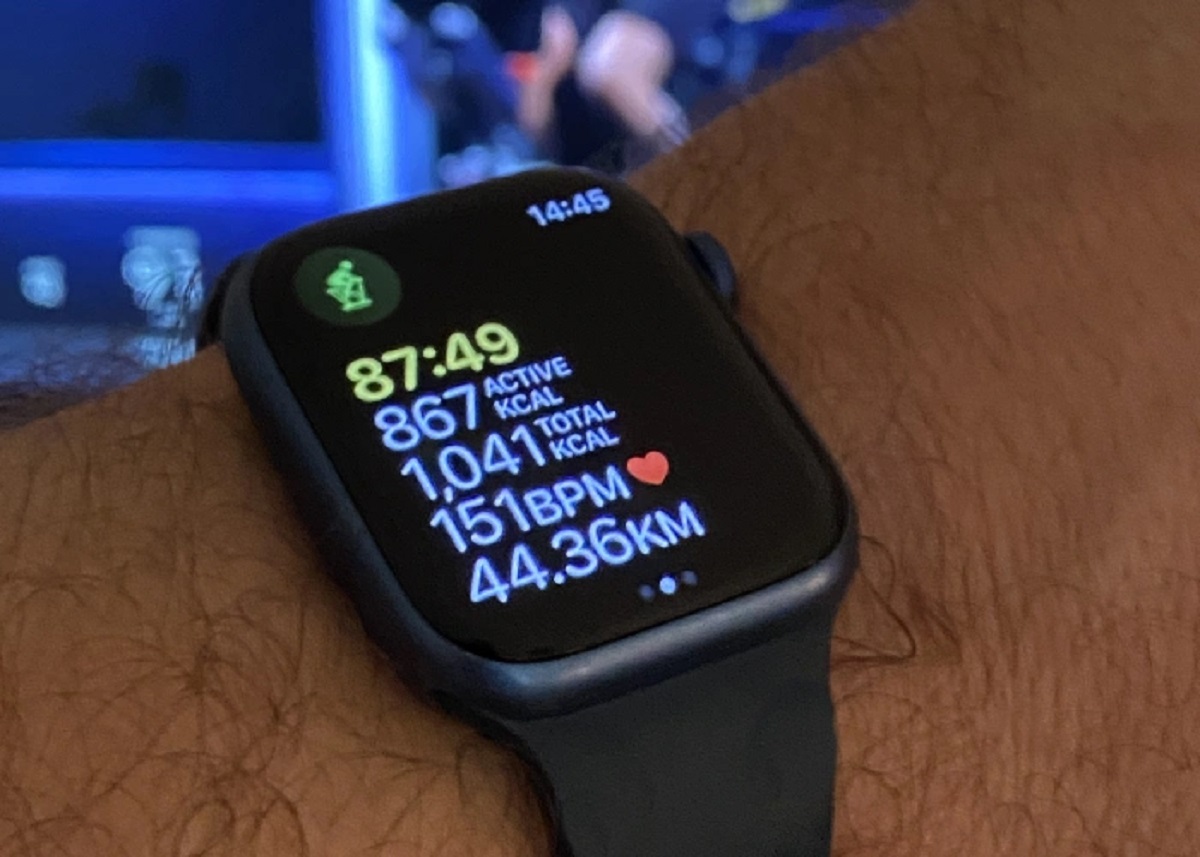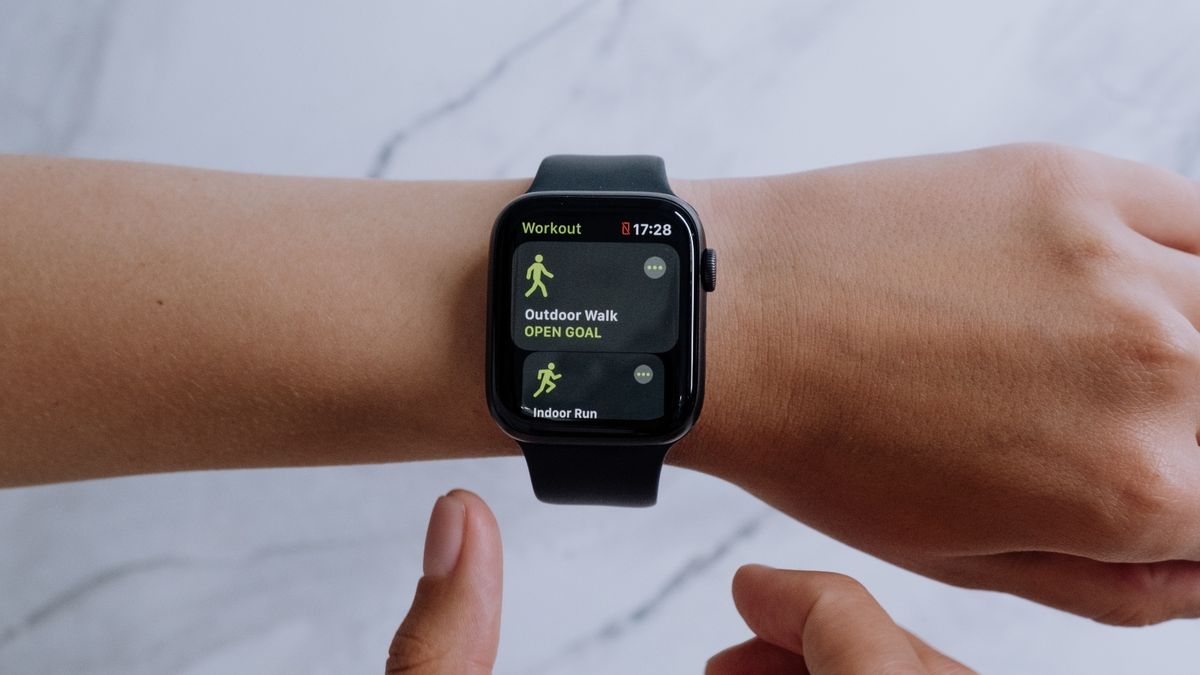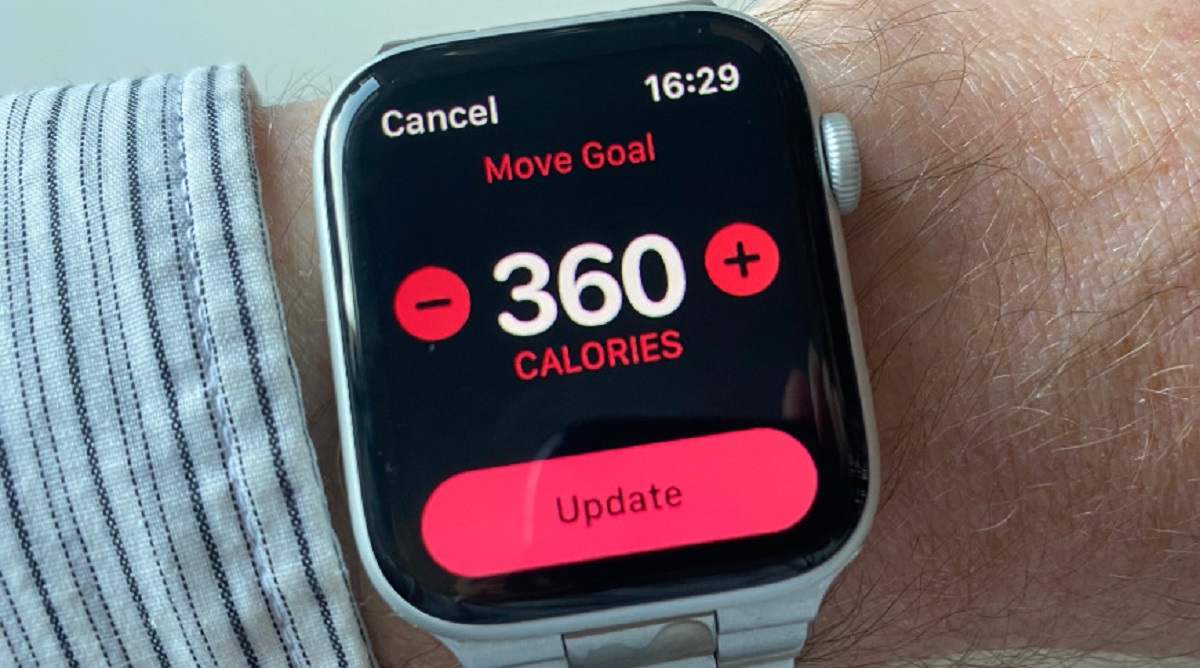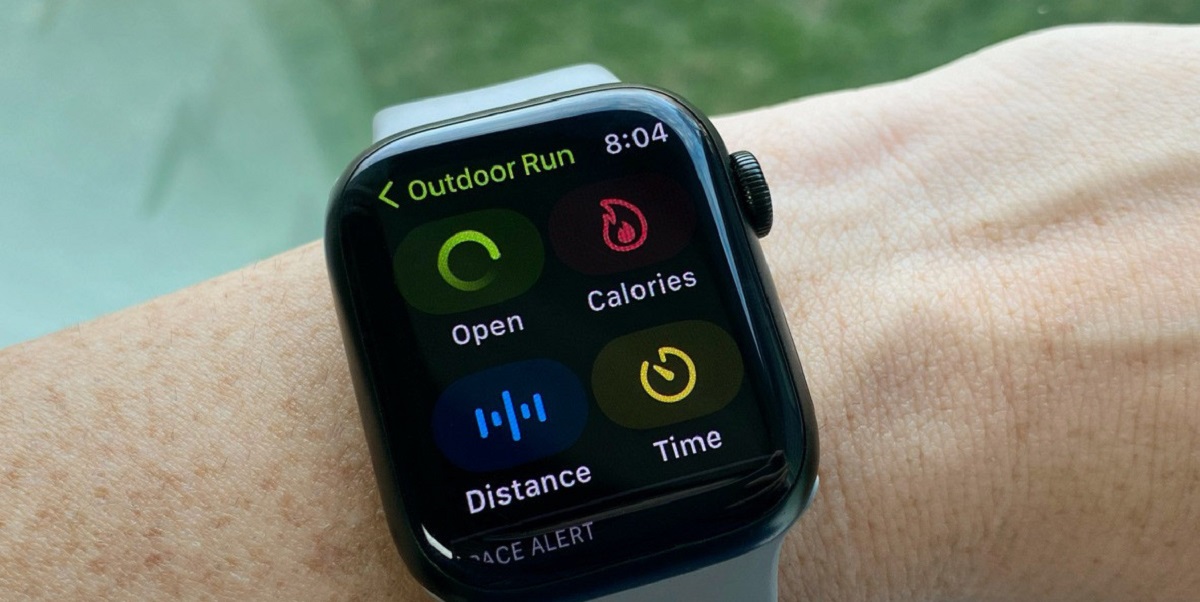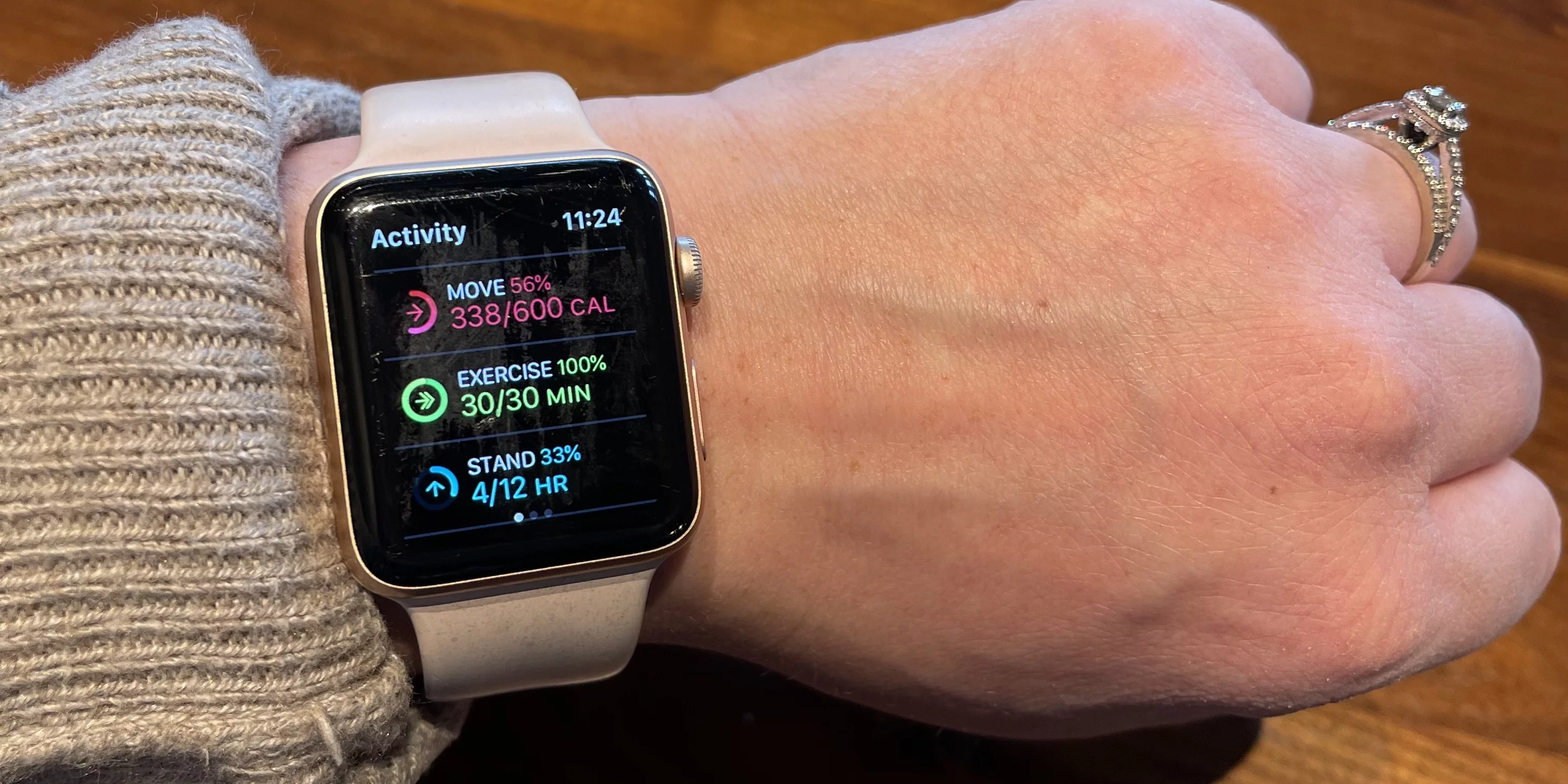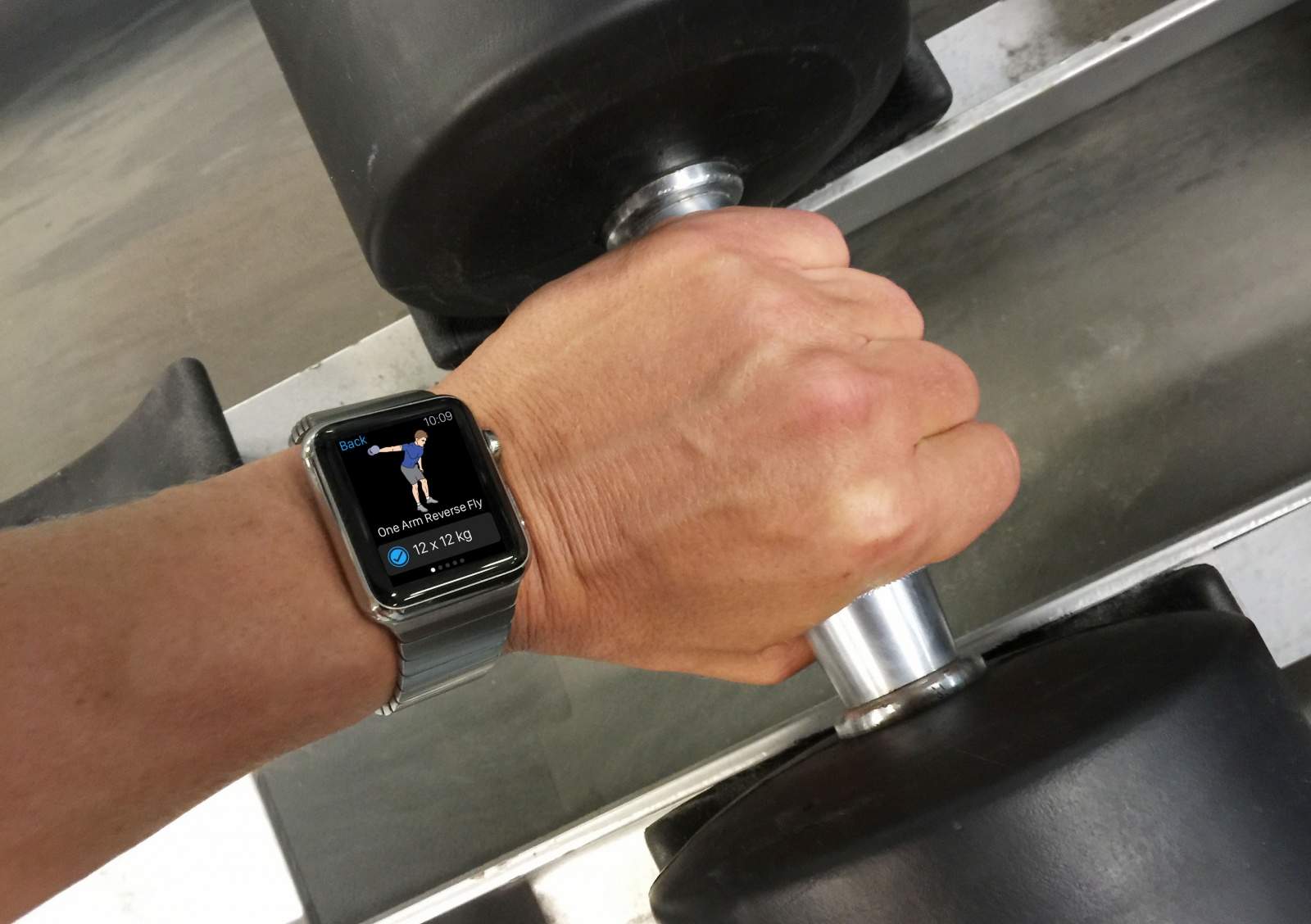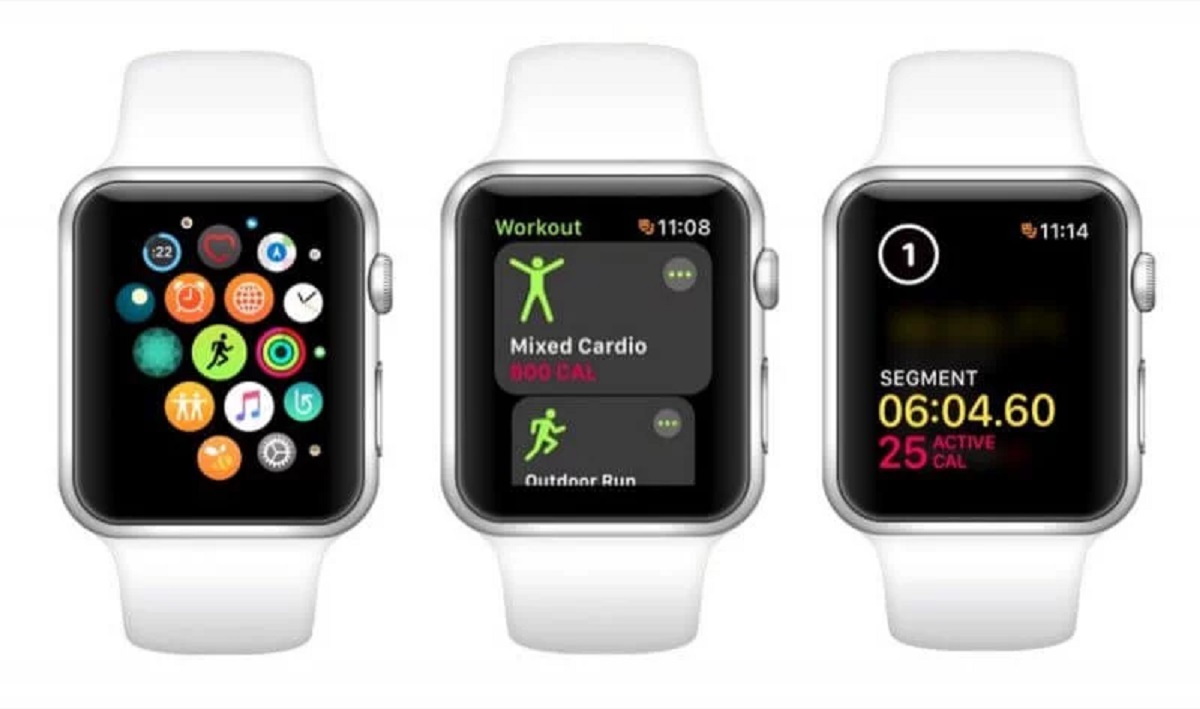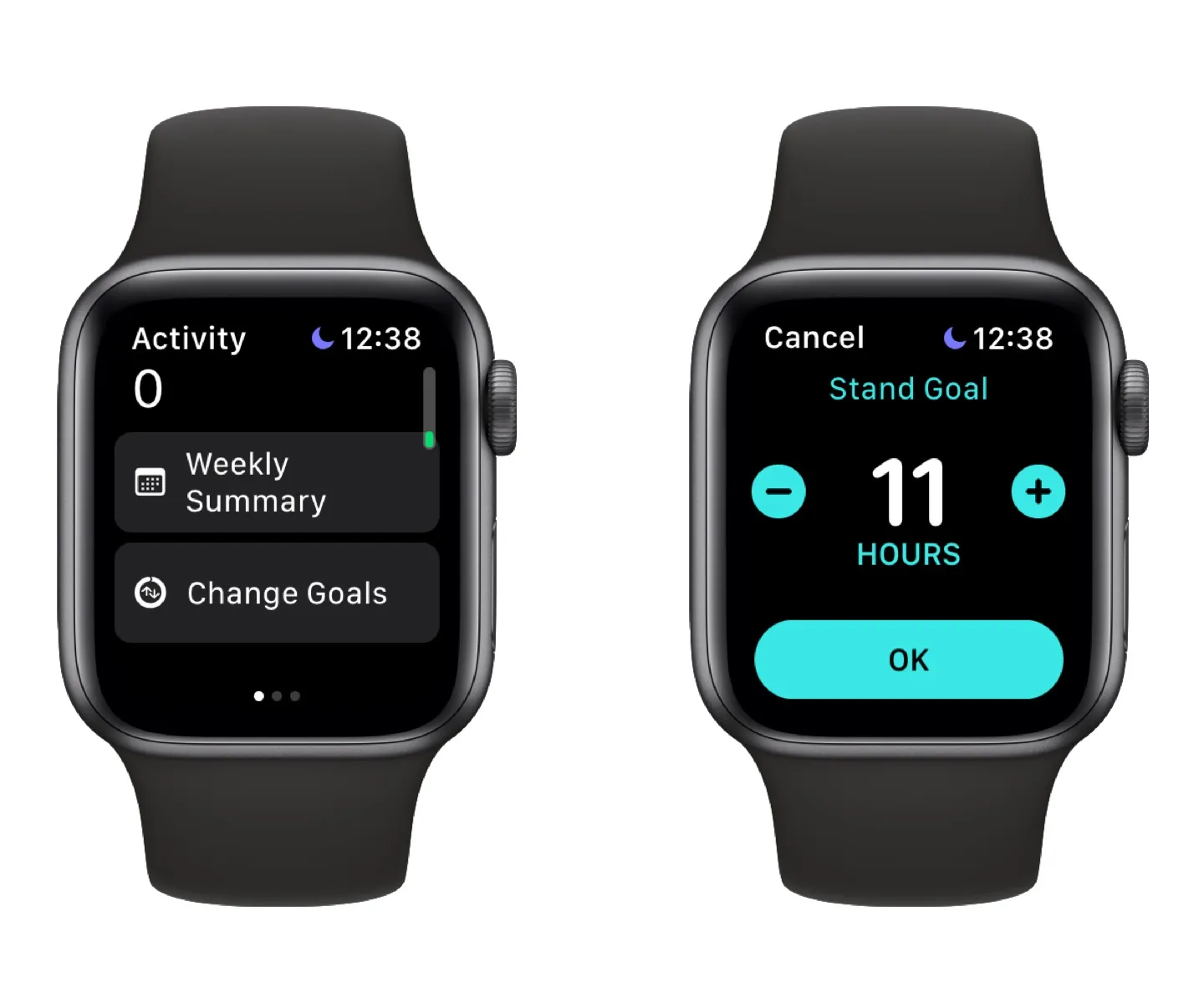Overview of Apple Watch’s Calorie Tracking Feature
One of the key features that sets the Apple Watch apart from other smartwatches is its ability to track calories burned. This feature allows users to monitor their daily calorie expenditure and gain valuable insights into their fitness progress.
The Apple Watch utilizes a combination of sensors, algorithms, and user input to accurately estimate calories burned throughout the day. By gathering data such as heart rate, movement, and user metrics, the device can provide an estimate of the calories burned based on the level of activity.
With the Apple Watch, users can not only track their calories burned during exercise but also throughout their daily activities. Whether it’s a brisk walk, a yoga session, or even just going about your regular tasks, the watch keeps a close eye on the calories you burn.
The calorie tracking feature on the Apple Watch is not only helpful for weight management but also for understanding the impact of your fitness routine on your overall energy expenditure. It can provide insights into the effectiveness of your workouts and help you make adjustments if needed.
To access the calorie tracking feature, users can simply use the pre-installed “Activity” app on their Apple Watch. This app provides a comprehensive view of your daily movements, active calories burned, and other key fitness metrics.
It’s important to note that accurate calorie tracking is contingent upon the correct information input by the user, such as age, gender, weight, and height. By providing accurate personal details and periodically updating them, users can enhance the accuracy of their calorie tracking on the Apple Watch.
Moreover, the Apple Watch can also sync with various third-party fitness apps, allowing users to integrate their preferred workout platforms and get a more comprehensive and personalized view of their calorie tracking data.
Overall, the calorie tracking feature on the Apple Watch is an essential tool for anyone looking to monitor their fitness progress, improve their overall health, or manage their weight. By providing users with valuable insights and motivation, the Apple Watch empowers individuals to make informed decisions about their fitness goals and live a healthier lifestyle.
How Apple Watch Measures Calories Burned
The Apple Watch utilizes advanced sensors and algorithms to accurately measure the calories burned by the user. This innovative technology ensures that users receive reliable and precise data to monitor their fitness progress. Here’s how the Apple Watch measures calories burned:
1. Activity Tracking: The Apple Watch continuously tracks your movement throughout the day, including steps taken and distance covered. By combining this data with your personal metrics, such as age, weight, and height, the watch can estimate the number of calories burned during different activities.
2. Heart Rate Monitoring: The Apple Watch features a built-in heart rate monitor that uses photoplethysmography (PPG) technology to measure your heart rate. By detecting the blood flow through your wrist, the watch can track your heart rate during workouts and daily activities. This enables a more accurate estimation of calories burned, as heart rate is a key factor in determining the intensity of your exercise.
3. Basal Metabolic Rate (BMR): The Apple Watch takes into account your basal metabolic rate, which is the number of calories your body needs to perform basic functions at rest. By considering your BMR along with the calories burned from physical activity, the watch provides a more comprehensive view of your total calorie expenditure.
4. Workouts Recognition: The Apple Watch uses machine learning algorithms to automatically recognize and categorize different types of workouts, such as running, cycling, swimming, and more. This allows the watch to provide specific and accurate calorie burn estimations for each activity, accounting for the intensity and duration of the workout.
5. Personalized Metrics: To ensure accurate calorie tracking, it’s important to input and regularly update your personal metrics, including age, weight, and height, in the Apple Health app. This information helps the watch tailor its calculations to your specific body composition and fitness level.
By combining these various data points, the Apple Watch can provide users with a comprehensive view of their calorie burn throughout the day. This information can be accessed through the Activity app on the Apple Watch or synced with other fitness apps for a more integrated tracking experience.
It’s worth noting that while the Apple Watch employs advanced technology to estimate calories burned, there may still be some margin of error. Factors such as individual variations in metabolism and technique during workouts can impact the accuracy of calorie tracking. However, the Apple Watch’s commitment to continuous improvement and updates ensures that users can expect increasingly accurate and reliable measurements of their calorie expenditure.
The Role of Heart Rate Monitoring in Calorie Tracking
Heart rate monitoring plays a crucial role in the accuracy and effectiveness of calorie tracking on the Apple Watch. By utilizing advanced optical sensors and algorithms, the Apple Watch can measure your heart rate during workouts and daily activities. Here’s why heart rate monitoring is essential for accurate calorie tracking:
1. Intensity of Exercise: Heart rate is an excellent indicator of the intensity of your exercise. By measuring the beats per minute, the Apple Watch can assess how hard your cardiovascular system is working. This information is vital for accurately estimating the calories burned. Higher heart rates generally indicate more intense activity, resulting in a higher calorie burn.
2. Personalized Calorie Calculations: Heart rate monitoring allows the Apple Watch to tailor its calorie calculations to your individual physiology. By considering your heart rate along with other factors such as age, weight, height, and gender, the watch can provide a more precise estimation of calories burned. This personalized approach ensures that calorie tracking is tailored to your specific fitness level and goals.
3. Tracking of Resting Heart Rate: The Apple Watch also tracks your resting heart rate, which is the number of beats per minute while at complete rest. By monitoring changes in your resting heart rate over time, the watch can provide insights into your cardiovascular fitness and overall health. This information is valuable for assessing improvements in fitness and tracking long-term changes in calorie burn efficiency.
4. EPOC (Excess Post-Exercise Oxygen Consumption): Heart rate monitoring helps account for EPOC, commonly known as the “afterburn” effect. After an intense workout, your body continues to burn calories as it recovers and restores oxygen levels. By tracking your heart rate during and after exercise, the Apple Watch can provide a more accurate estimation of the total calories burned, taking into account this post-workout calorie burn.
5. Heart Rate Zones: The Apple Watch divides your heart rate into different zones, such as “fat burn,” “cardio,” and “peak.” Each zone represents a range of heart rates associated with various levels of exercise intensity. By monitoring your heart rate and guiding you to stay within the desired zones, the Apple Watch helps optimize your calorie burn during workouts.
By incorporating heart rate monitoring into its calorie tracking feature, the Apple Watch gives users a more comprehensive understanding of their fitness and energy expenditure. With accurate heart rate data, users can track their progress, set realistic goals, and make adjustments to their exercise routine for optimal calorie burn and overall health.
Understanding the Different Calorie Metrics on Apple Watch
When using the calorie tracking feature on the Apple Watch, you may come across different calorie metrics. These metrics provide valuable insights into your energy expenditure and help you gauge the intensity of your workouts. Here’s what you need to know about the different calorie metrics on the Apple Watch:
1. Active Calories: Active calories represent the calories burned through physical activity, such as workouts, brisk walks, or any movement that gets your heart rate up. The Apple Watch calculates active calories based on factors like the intensity and duration of your activity, along with your heart rate data. This metric shows the specific calories you’ve burned through exercise.
2. Resting Calories: Resting calories, also known as basal metabolic rate (BMR) calories, represent the calories your body naturally burns while at rest to perform essential functions like breathing, circulating blood, and maintaining body temperature. The Apple Watch estimates resting calories based on your personal metrics, such as age, weight, and gender. These calories are burned regardless of physical activity.
3. Total Calories: Total calories reflect the sum of both active calories and resting calories. It provides an overall measure of your total energy expenditure throughout the day. This metric takes into account the calories burned during exercise as well as the calories your body naturally burns while at rest. Tracking your total calories can help you understand your overall energy balance.
4. Move Calories: Move calories represent the calories burned through movement and physical activity. It is a subset of the active calories metric and specifically focuses on calories burned from purposeful movement, such as walking, running, or engaging in a workout. Move calories provide a more detailed breakdown of the specific calories burned during active moments of the day.
5. Exercise Minutes: While not a calorie metric, exercise minutes are an important measurement incorporated into the Apple Watch’s fitness tracking. It tracks the amount of time you spend engaged in moderate to high-intensity exercise. By accumulating exercise minutes, you can gauge your progress and work towards meeting daily or weekly exercise goals.
Understanding these different calorie metrics on the Apple Watch allows you to gain deeper insights into your daily energy expenditure and exercise intensity. By tracking these metrics over time, you can better understand how your activities contribute to your overall calorie burn and make informed decisions to achieve your fitness goals.
Factors That Can Affect Calorie Tracking Accuracy on Apple Watch
While the Apple Watch provides a reliable and convenient way to track calories burned, it’s important to acknowledge that various factors can influence the accuracy of calorie tracking. Understanding these factors can help you interpret the data more effectively. Here are some factors that can affect calorie tracking accuracy on the Apple Watch:
1. Personal Metrics: Accurate calorie tracking relies on accurate personal metrics, such as age, weight, height, and gender. If these details are not correctly entered or regularly updated in the Apple Health app, it may lead to inaccuracies in calorie calculations. Ensuring that your personal information is up-to-date and accurate is essential for maximizing the accuracy of calorie tracking.
2. Individual Variations: Calorie burn varies from person to person due to differences in metabolism, body composition, and fitness level. While the Apple Watch uses algorithms to estimate calories burned based on general information, it may not account for specific individual variations. Keep in mind that these estimations are based on averages and may not always align perfectly with your unique physiological characteristics.
3. User Input: The accuracy of calorie tracking also depends on the user’s input regarding workout type, duration, and intensity. For instance, if you forget to start or stop a workout session on your Apple Watch, it may not accurately capture the calories burned during that specific activity. Taking care to ensure the proper selection and timing of workout sessions can improve the accuracy of calorie tracking.
4. Motion Detection: The Apple Watch uses motion sensors to track your physical activity and estimate calories burned. However, it may not be able to accurately track activities where your arms are relatively stationary, such as cycling or weightlifting. In such cases, the watch may underestimate the calories burned. Using specific workout modes or third-party apps designed for those activities can help improve accuracy in these situations.
5. Recording Intensity: The Apple Watch estimates calories burned based on the intensity of your physical activity. If you perform an activity with varying intensity levels (e.g., interval training), the watch may not capture the exact fluctuations accurately. It’s important to keep this in mind when assessing calorie tracking data during workouts that involve frequent changes in intensity.
6. Environmental Factors: Environmental conditions can influence the accuracy of the Apple Watch’s sensors. Factors such as extreme temperatures, high humidity, or water exposure may affect the watch’s ability to track heart rate or motion accurately. Be aware of these factors and make adjustments if necessary, such as using a waterproof case or exercising indoors during extreme weather conditions.
It’s worth noting that while the Apple Watch strives to provide accurate calorie tracking, it is not perfect, and there may be minor discrepancies. However, by understanding the potential factors that can affect accuracy and taking proactive steps to address them, users can enhance the reliability of the calorie tracking data and make more informed decisions regarding their fitness goals.
Tips for Maximizing the Accuracy of Calorie Tracking on Apple Watch
To ensure the most accurate and reliable calorie tracking on your Apple Watch, consider implementing the following tips:
1. Update Personal Metrics: Regularly review and update your personal metrics, such as age, weight, height, and gender, in the Apple Health app. Accurate personal information is crucial for the watch to provide more precise calculations of calories burned based on your individual characteristics.
2. Wear the Watch Properly: Ensure that you wear your Apple Watch snugly on your wrist, just above the wrist bone, for optimal sensor performance. A loose or ill-fitting watch may impact the accuracy of heart rate monitoring and motion detection, which could affect calorie tracking accuracy.
3. Use Preset Workout Modes: When engaging in different workouts, take advantage of the preset workout modes available on your Apple Watch. Selecting the appropriate mode (e.g., running, cycling, swimming) helps the watch better capture the specific movement patterns and intensity associated with that activity, resulting in more accurate calorie tracking.
4. Start and Stop Workouts Properly: Remember to start and stop workout sessions on your Apple Watch to accurately record the duration and intensity of your activities. This ensures that the watch captures the full calorie burn for each workout and facilitates more precise calorie tracking.
5. Consider External Heart Rate Monitors: While the Apple Watch’s built-in heart rate monitor is generally reliable, some users may find more accurate heart rate measurements with the use of external chest straps or similar heart rate monitors. These devices can provide enhanced accuracy, especially for activities that involve intense arm movements or when wrist-based measurements may be less accurate.
6. Validate Results with Perceived Exertion: Use your perceived exertion level as a guideline to assess the accuracy of calorie tracking. If the Apple Watch suggests a significantly low or high calorie burn compared to how you perceive the intensity of your activity, it may be worth investigating further or consulting with a health professional.
7. Regularly Calibrate Your Apple Watch: Consider calibrating your Apple Watch periodically for a more accurate measurement of your stride and distance during outdoor activities like running or walking. This calibration process uses GPS data and can improve the accuracy of calorie calculations for activities that rely on distance-based tracking.
Remember that while the Apple Watch’s calorie tracking feature is designed to provide estimates, it may not always be 100% accurate due to the complexities of individual physiology. Nevertheless, by implementing these tips, you can maximize the accuracy of calorie tracking on your Apple Watch and gain valuable insights into your physical activity and fitness progress.
Using Third-Party Apps for Enhanced Calorie Tracking on Apple Watch
In addition to the built-in calorie tracking features on the Apple Watch, you can also utilize third-party apps to enhance and customize your calorie tracking experience. These apps offer additional features and insights that can further optimize your fitness journey. Here’s how using third-party apps can enhance calorie tracking on your Apple Watch:
1. Specialized Fitness Tracking: Many third-party apps focus on specific fitness activities like running, cycling, or weightlifting. These apps often provide more comprehensive data and analysis for those particular activities, allowing for more accurate calorie tracking. They may incorporate advanced algorithms and leverage GPS features to provide precise measurements and route tracking.
2. Integrated Health Platforms: Some popular health and fitness platforms offer Apple Watch apps that seamlessly integrate with the Apple Health app. These apps provide a wide range of features for tracking not only calories burned but also nutrition, sleep, and overall health. The integration allows for a unified view of your fitness data, making it easier to track and manage your goals.
3. Community and Coaching: Third-party fitness apps often offer features that promote community engagement and coaching. You can join challenges, connect with like-minded individuals, and receive personalized guidance from fitness professionals, further motivating you in your calorie tracking journey.
4. Food Logging and Nutrition Tracking: Enhanced calorie tracking isn’t just about monitoring calories burned but also about managing your calorie intake. Many third-party apps offer food logging and nutrition tracking features that allow you to log your meals, track macronutrients, and set personalized calorie goals. When combined with the Apple Watch’s calorie tracking data, you can gain a more comprehensive understanding of your energy balance.
5. Integration with Wearable Devices: Third-party apps often offer seamless integration with wearable devices, including the Apple Watch. These integrations can provide enhanced accuracy in tracking and analyzing your calorie burn by utilizing additional sensors, such as external heart rate monitors or power meters. This integration allows for a more comprehensive and customized calorie tracking experience.
When using third-party apps for enhanced calorie tracking, it’s important to select reputable apps that prioritize data privacy and security. Read reviews, do thorough research, and ensure that the app is compatible with your Apple Watch and syncs well with the Apple Health app for a seamless tracking experience.
By leveraging the capabilities of third-party apps, you can extend the functionality of your Apple Watch and tailor your calorie tracking to your specific fitness goals and preferences. These apps offer innovative features, enhanced accuracy, and a more personalized approach to calorie tracking, empowering you to make informed decisions and optimize your health and fitness journey.
Apple Watch’s Calorie Tracking and Weight Management
The calorie tracking feature on the Apple Watch can be a valuable tool for individuals looking to manage their weight effectively. By monitoring your calorie burn throughout the day, the watch provides insights that can guide your weight management journey. Here’s how the Apple Watch’s calorie tracking can support weight management:
1. Awareness and Accountability: Calorie tracking on the Apple Watch increases your awareness of your daily energy expenditure. It provides a tangible measure of the calories burned during physical activity and helps you understand how your lifestyle and exercise choices contribute to your overall calorie balance. This awareness promotes accountability, helping you make conscious decisions about your diet and exercise habits.
2. Energy Balance: Weight management is fundamentally about achieving a balance between the calories you consume and the calories you burn. The Apple Watch’s calorie tracking feature, combined with its food logging capabilities or compatible apps, enables you to monitor both sides of the equation. By tracking your calorie intake and comparing it to your calorie burn, you can make informed choices to create a calorie deficit or maintain a balanced energy intake.
3. Goal Setting: The Apple Watch allows you to set personalized goals for daily calorie burn. By aiming for a specific calorie target, you can create a structured plan for weight management. The watch provides real-time updates on your progress, helping you stay motivated and on track towards your calorie and weight-related goals.
4. Adjusting Caloric Intake: Calorie tracking on the Apple Watch can help you determine if your current caloric intake aligns with your weight management goals. By monitoring your daily calorie burn, you can adjust your caloric intake to create a calorie deficit or maintain a suitable energy balance. This awareness allows for adjustment throughout the day, making it easier to make mindful food choices and stay within your prescribed caloric range.
5. Monitoring Weight Loss Progress: The Apple Watch’s calorie tracking, combined with regular weigh-ins, allows you to monitor your weight loss progress over time. By comparing your calorie burn and intake to your weight changes, you can determine if you’re moving in the right direction and make necessary adjustments. This data-driven approach helps you stay motivated and make informed decisions to support your weight loss journey.
Remember that weight management is a holistic process that involves various factors, including nutrition, physical activity, sleep, and stress management. While the Apple Watch’s calorie tracking feature provides valuable insights into energy expenditure, it’s important to consult with healthcare professionals or nutritionists for comprehensive guidance and support in your weight management efforts.
By using the Apple Watch’s calorie tracking feature as part of a well-rounded approach to weight management, you can gain valuable insights, establish healthier habits, and make informed decisions to achieve your weight-related goals.
Personalizing Calorie Tracking Goals on Apple Watch
The Apple Watch allows you to personalize your calorie tracking goals to align with your individual needs and fitness objectives. By setting personalized goals, you can tailor your calorie tracking experience on the Apple Watch to optimize your progress and motivation. Here’s how you can personalize your calorie tracking goals:
1. Custom Calorie Targets: The Apple Watch enables you to set custom calorie targets based on your unique goals and preferences. Whether you’re aiming to lose weight, maintain your current weight, or even gain weight, you can set a daily calorie burn goal that aligns with your desired outcome. This customization ensures that your calorie tracking is in line with your specific needs and ambitions.
2. Activity Rings: The Activity app on the Apple Watch utilizes three colorful rings to visually represent your daily progress towards your calorie burn goals. The Move ring reflects active calories, the Exercise ring tracks minutes of moderate to high-intensity activity, and the Stand ring encourages you to take regular breaks from sitting. Adjusting the target values for these rings allows you to personalize your goals and challenge yourself at a level that suits your fitness level.
3. Weekly Challenges: Apple Watch also offers weekly challenges that encourage you to surpass your calorie burn goals. These challenges, such as the “Move” streak challenge or the “Perfect Week” challenge, provide an extra layer of motivation and accountability. Participating in these challenges can help you stay consistent and engaged in your calorie tracking journey.
4. Incremental Goal Setting: If you’re new to calorie tracking or just starting your fitness journey, it can be helpful to set incremental goals. Gradually increasing your daily calorie burn target over time allows for a more sustainable and achievable progression. This approach keeps you motivated and prevents burnout or discouragement from setting overly ambitious goals at the start.
5. Integration with Health Platforms: Integrating the Apple Watch with health and fitness platforms, such as Apple Health or third-party apps, enables a seamless transfer of data and a more comprehensive view of your calorie tracking goals. These integrations allow you to consolidate data from various sources, providing a holistic perspective on your progress and enabling you to fine-tune your goals accordingly.
Remember, personalized calorie tracking goals should not solely focus on the number of calories burned but also consider other aspects of wellness, such as nutrition, sleep, and overall physical fitness. Consulting with a healthcare professional or a certified fitness expert can help you set realistic and personalized goals that take into account your individual circumstances and objectives.
By customizing your calorie tracking goals on the Apple Watch, you can create a tailored experience that motivates and guides you towards achieving your specific fitness aspirations. These personalizations ensure that calorie tracking becomes an effective tool in supporting your overall health and well-being.
Making Use of Calorie Tracking Data on Apple Watch for Fitness Improvement
The calorie tracking data provided by the Apple Watch can serve as a valuable resource for improving your fitness and overall health. By leveraging this data effectively, you can gain insights, set goals, and make informed decisions to optimize your fitness journey. Here’s how you can make use of calorie tracking data on the Apple Watch for fitness improvement:
1. Set Realistic Goals: Analyzing your calorie tracking data allows you to set realistic fitness goals. You can identify patterns, evaluate your current calorie burn, and determine areas where improvements can be made. Using this information, you can set achievable targets that challenge you while still being attainable, ensuring progress and motivation on your fitness journey.
2. Track Progress and Adjust: Regularly reviewing your calorie tracking data helps you monitor your progress and make necessary adjustments. By examining trends over time, you can identify areas of improvement or areas where you may need to push yourself further. This data-driven approach allows you to fine-tune your workouts, optimize your calorie burn, and continually challenge yourself.
3. Identify Areas for Improvement: Calorie tracking data can help you identify specific activities or habits that contribute significantly to your calorie burn. For example, if you notice that running or cycling generates a higher calorie burn compared to other activities, you can prioritize those exercises to maximize your workouts. By understanding which activities are most effective for you, you can focus on what works best for your body and fitness goals.
4. Monitor Energy Balance: Calorie tracking data enables you to assess your energy balance, which is crucial for weight management and overall health. By comparing your calorie intake to your calorie burn, you can identify potential imbalances. This information allows you to make informed decisions regarding portion sizes, food choices, and overall nutrition to achieve a more balanced calorie equation.
5. Discover Trends and Patterns: Examining your calorie tracking data may reveal trends or patterns in your activity levels and calorie burn. For instance, you might notice that you consistently burn more calories on days when you engage in high-intensity interval training (HIIT) workouts. Recognizing these trends can guide future workout planning, helping you incorporate activities that consistently yield higher calorie burns.
6. Stay Motivated and Accountable: Monitoring your calorie tracking data on the Apple Watch serves as a constant reminder of your fitness goals and progress. It acts as motivation and accountability, encouraging you to stay consistent and push yourself further. You can refer to the data during moments of low motivation or to celebrate milestones, reinforcing your commitment to your fitness journey.
Remember, while calorie tracking data provides valuable insights, it should be considered in conjunction with other aspects of your fitness routine, including strength training, cardiovascular exercise, and overall lifestyle choices. Incorporate a holistic approach to your fitness journey, involving balanced nutrition, proper rest, and stress management, for optimal results.
By leveraging the calorie tracking data on the Apple Watch, you can gain valuable insights into your fitness progress, identify areas for improvement, and make informed decisions to optimize your workouts and overall health. Use this information to guide and empower yourself on your fitness journey.
Frequently Asked Questions about Apple Watch’s Calorie Tracking Feature
1. How does the Apple Watch track calories?
The Apple Watch tracks calories using a combination of sensors, algorithms, and user input. It takes into account factors such as movement, heart rate, and personal metrics to estimate calories burned throughout the day.
2. How accurate is the Apple Watch’s calorie tracking feature?
The Apple Watch’s calorie tracking feature is generally accurate, but it’s important to remember that individual variations and external factors can influence accuracy. The watch relies on algorithms and assumptions based on average data, so there may be some margin of error.
3. Can I rely on the Apple Watch’s calorie tracking for weight loss?
The Apple Watch’s calorie tracking can be a useful tool for weight loss, but it’s important to remember that weight loss is a complex process that involves more than just tracking calories. It’s essential to focus on overall healthy habits, including balanced nutrition and regular exercise, in conjunction with calorie tracking.
4. Can I track calories burned during non-exercise activities?
Yes, the Apple Watch can track calories burned during both exercise and non-exercise activities. It continuously monitors your movement throughout the day and calculates calories burned based on your activity level and heart rate data.
5. Do I need to manually enter my personal information for accurate calorie tracking?
Yes, inputting accurate personal information, such as age, weight, height, and gender, is crucial for accurate calorie tracking on the Apple Watch. Updating this information periodically ensures that the calculations reflect your current profile.
6. Does the Apple Watch track calories burned during strength training?
The Apple Watch can estimate calories burned during strength training workouts, but it may be less accurate compared to activities with more repetitive motion. For more accurate measurements during strength training, consider using specific workout modes or compatible third-party apps designed for weightlifting or resistance training.
7. Can I integrate third-party fitness apps with the Apple Watch’s calorie tracking feature?
Yes, the Apple Watch can sync with various third-party fitness apps, allowing for a more comprehensive and personalized view of your calorie tracking data. These apps can provide additional features, workout modes, and analysis to enhance your calorie tracking experience.
8. How often should I review my calorie tracking data?
How often you review your calorie tracking data is entirely up to you. Some people prefer to review it daily to monitor their progress, while others may choose to do it weekly or monthly. Find a frequency that suits your needs and provides the necessary insights and motivation for your fitness journey.
9. Can I share my calorie tracking data with my healthcare provider?
Yes, you can share your calorie tracking data with your healthcare provider if needed. The Apple Health app allows you to export and share your information with other health and fitness platforms or directly with your healthcare provider to facilitate a more comprehensive assessment of your overall health and wellness.
10. Does the Apple Watch’s calorie tracking consider the afterburn effect?
Yes, the Apple Watch takes the afterburn effect, scientifically known as Excess Post-Exercise Oxygen Consumption (EPOC), into account. The watch continues to estimate calorie burn even after your workout session based on the intensity and duration of the exercise.
Remember, these frequently asked questions provide general information and guidelines. Should you have any specific concerns or inquiries about the Apple Watch’s calorie tracking feature, it’s always best to consult Apple’s official documentation or seek advice from their customer support.







